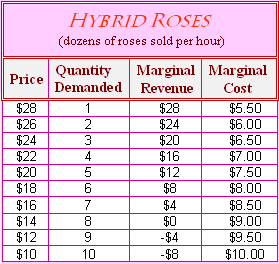Hybrid Roses is the merely florist in 60 miles of Presidio, Texas. When total fixed costs (for example, rent and utilities) are $9 per hour, that profit-maximizing monopolist will charge a price of: (1) $10 per dozen roses. (2) $12 per dozen roses. (3) $14 per dozen roses. (4) $16 per dozen roses. (5) $18 per dozen roses.

I need a good answer on the topic of Economics problems. Please give me your suggestion for the same by using above options.